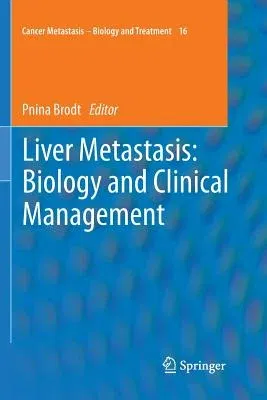Liver metastases are a frequent and often fatal occurrence in cancer
patients, particularly those with malignancies of the gastrointestinal
(GI) tract. While recent improvements in surgical techniques and a more
aggressive approach to resection of liver metastases have improved long
term survival for some patients, most patients with hepatic metastases
still succumb to their disease. To improve these dismal statistics, a
better understanding of the biology of liver metastasis, particularly
the early stages that can be targeted for prevention, is essential.
Once cancer cells enter the liver, several different scenarios may
occur. The cancer cells may be immediately destroyed by local defence
mechanisms, they may enter a state of dormancy as solitary cells and
never produce a metastasis, initiate a short-lived process of
proliferation that is aborted before a metastasis is established or
actively proliferate to form macrometastases. The chapters in Part I of
this book provide insight into the cellular/molecular mechanisms that
determine which of these scenarios prevails. Written by experts
researchers in the filed of metastasis, these chapters provide
state-of-the art reviews on the cellular and molecular processes that
impact the early stages of the metastatic process. The unique
microenvironment of the liver, its various anatomical, cellular and
molecular features and the impact they have on metastasis are
highlighted. In addition, the role of inflammation (pre-existing and
tumor-induced), host innate and adaptive immune responses, cytokines,
chemokines, growth factors and the unique molecular signatures of
metastatic tumor cells are reviewed with an underscoring of the
translational implications of the current state of knowledge.
Against this background, the chapters in Part II of the book provide
critical reviews on major aspects of the clinical management of hepatic
metastases. These include imaging strategies, surgical and
chemotherapeutic treatment approaches and the use of targeted biological
therapeutics such as anti-angiogenic drugs as treatment modalities.
By combining information on biological and clinical aspects of liver
metastasis, this volume will serve as an excellent resource for
scientists, clinicians, clinician/ scientists and trainees in the
domains of oncology, surgical oncology, hepatobiliary physiology and
radiology.

